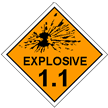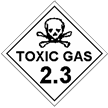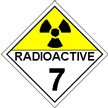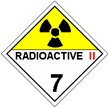|
Class 1 : Explosives
Explosives with a mass
|
Class 1 : Explosives
Explosives with a severe
|
Class 1 : Explosives
Explosives with a fire,
|
Class 1 : Explosives
Minor fire of |
Class 1 : Explosives
Blasting agents.
|
|
Class 1 : Explosives
Extremely insesnsitive
|
Class 2 : Gases
Flammable gas - gases
|
Class 2 : Gases
Non flammable gases- |
Class 2 : Gases
Non flammable gases- |
Class 2 : Gases
Poisonous gases – gases |
|
Class 3 : Flammable
Highly flammable liquids
|
Class 3 : Flammable
Flammable liquids with
|
Class 3 : Flammable
Liquids with a flashpoint |
Class 4 : Flammable
Flammable solids which
|
Class 4 : Flammable
Spontaneously
|
|
Class 4 : Flammable
Substances which emit
|
Class 5 : Oxidizing
Oxidising agents other
|
Class 5 : Oxidizing
Organic peroxides, either
|
Class 6 : Poisonous
Poisonous substances |
Class 6 : Infectious
Biohazardous substances
|
|
Class 6 : Infectious
Radioactive substances |
Class 7 : Radioactive
Radioactive substances |
Class 7 : Radioactive
Radioactive substances |
Class 7 : Radioactive
Radioactive substances |
Class 8 : Corrosive
Acids example sulfuric
|
|
Class 8 : Corrosive
Alkalis example
|
Class 9 :
Hazardous substances |
































